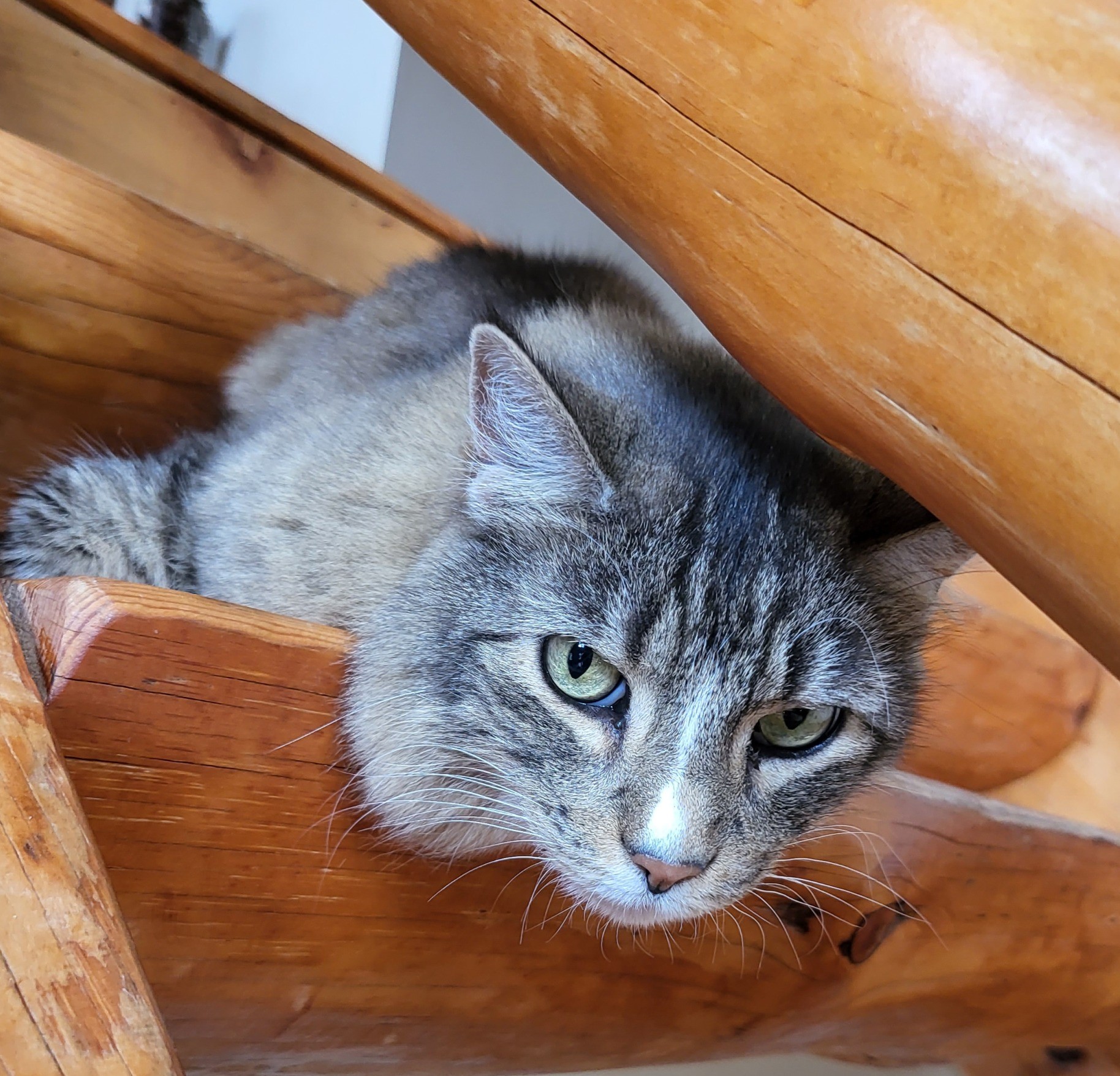Understanding Your Cat's Behavior
At The Hometown Veterinarian, we believe that your cat's behavior is shaped by experiences and environment. Behavioral issues are not innate, but can be modified with the right approach and commitment. Whether your cat is displaying undesirable habits or you want to strengthen the bond with your feline companion, we are here to guide you every step of the way.
Common Behavioral Issues in Cats
Behavioral issues can be frustrating and disruptive, but most can be addressed with proper understanding and care. Some of the most frequent feline behavior concerns include:
-
Litter Box Problems: Inappropriate elimination or refusal to use the litter box.
-
Aggression: Biting, scratching, or displaying hostility toward humans or other pets.
-
Excessive Meowing: Persistent vocalization that can indicate anxiety, boredom, or medical issues.
-
Destructive Scratching: Damaging furniture or other household items.
-
Fear or Anxiety: Hiding, trembling, or avoiding interaction with people or pets.
Common Behavior Questions and Tips
Why Is My Cat Peeing Outside the Litter Box?
One of the most frustrating challenges for cat owners is dealing with a cat that stops using the litter box. This issue can stem from several factors, including medical conditions, stress, or even preferences about the litter box setup.
Common Causes:
-
Medical Issues: Urinary tract infections, kidney disease, or diabetes can cause cats to avoid the litter box.
-
Stress or Anxiety: Changes in the household, such as new pets or moving, can trigger inappropriate elimination.
-
Litter Box Preferences: Cats may be particular about the type of litter, the cleanliness of the box, or its location.
Tips for correction:
-
Schedule a veterinary exam to rule out medical causes.
-
Ensure the litter box is clean, quiet, and easily accessible.
-
Ensure that there is at least one litter box per social group of cats in your house plus one.
-
Address any household stressors and consider using calming aids if needed.
How Can I Calm an Anxious Cat?
Cats can experience anxiety due to changes in their environment, unfamiliar people, or other stressors. Recognizing the signs and taking steps to reduce anxiety can improve your cat’s well-being.
Tips to Calm Your Cat:
- Provide a Safe Space: Create a quiet, comfortable area where your cat can retreat when feeling stressed.
- Use Calming Products: Pheromone diffusers, sprays, and calming collars can help ease anxiety.
- Stick to a Routine: Cats thrive on consistency. Keeping feeding and playtimes regular can reduce stress.
- Interactive Play: Regular play sessions help release energy and reduce anxiety.
- Consult a Veterinarian: If anxiety persists, professional guidance may be necessary to develop a tailored plan.
What Are Common Cat Behavior Problems and How Can I Solve Them?
Understanding your cat’s behavior is essential to creating a harmonious household. Here are some common problems and practical solutions:
Common Issues:
-
Scratching Furniture: Provide scratching posts and reward your cat for using them.
-
Excessive Meowing: Identify the cause, such as hunger, boredom, or medical issues, and address it accordingly.
-
Aggression: Pinpoint triggers and work on gradual desensitization to reduce hostile behavior.
Correction tips: Understanding your cat’s body language and needs is key. Patience, consistency, and positive reinforcement are essential in resolving behavior issues.
How Do I Stop My Cat from Being Aggressive?
Aggression in cats can be alarming and may put both humans and other pets at risk. Identifying the cause of the aggression is the first step in addressing it.
Types of Aggression:
-
Fear-Based Aggression: Triggered by perceived threats or unfamiliar situations.
-
Territorial Aggression: Directed toward other animals that the cat perceives as intruders.
-
Redirected Aggression: Occurs when a cat cannot reach the source of frustration and lashes out at a nearby target.
Steps to Reduce Aggression:
-
Identify the type of aggression and its underlying triggers.
-
Use calming aids and create a stress-free environment.
-
Gradually reintroduce pets or people involved in the aggressive incident to help reduce hostility.
Our Approach to Behavior Modification
We believe that many behavioral issues can be resolved through a combination of medical assessment, environment adjustments, and consistent training. Our behavior services focus on:
-
Identifying the Cause: Behavioral problems often have underlying medical or environmental causes. We start by ruling out any medical conditions through a thorough physical exam.
-
Developing a Plan: Every cat is unique. We tailor behavior modification plans to suit your cat’s needs and your household environment.
-
Owner Education: Behavior modification requires commitment from pet owners. We equip you with the tools and knowledge to reinforce positive behaviors at home.
-
Ongoing Support: Behavior modification is a process. We offer ongoing support to help you navigate challenges and celebrate progress.
Why Choose The Hometown Veterinarian for Behavior Services?
As part of The Hometown Veterinarian Difference, we provide compassionate, personalized care to help you and your cat achieve behavioral success. Our experienced team is dedicated to improving your feline companion’s well-being through:
-
Comprehensive behavior assessments
-
Customized behavior plans
-
Ongoing guidance and support
Your commitment, combined with our expertise, can help your cat learn new, positive behaviors and unlearn undesirable ones. Schedule an appointment with us today to start your cat on the path to better behavior and a happier life.
To book an appointment, call 641-758-3333 or click to Request an Appointment.
